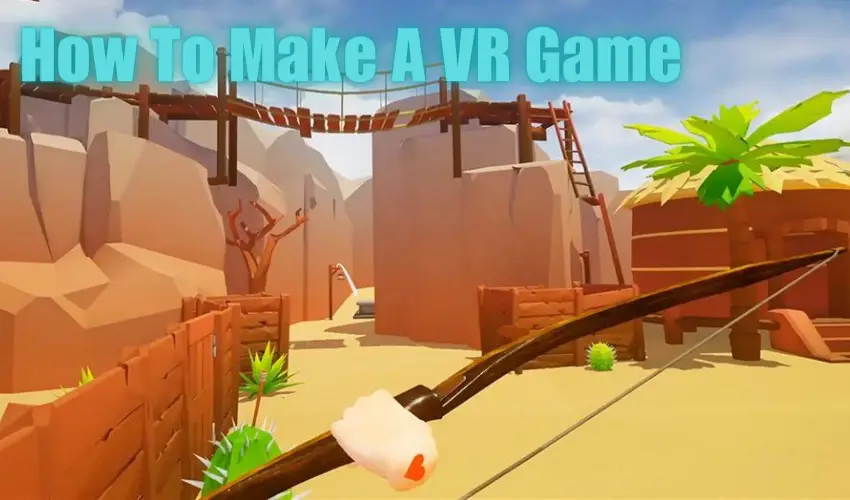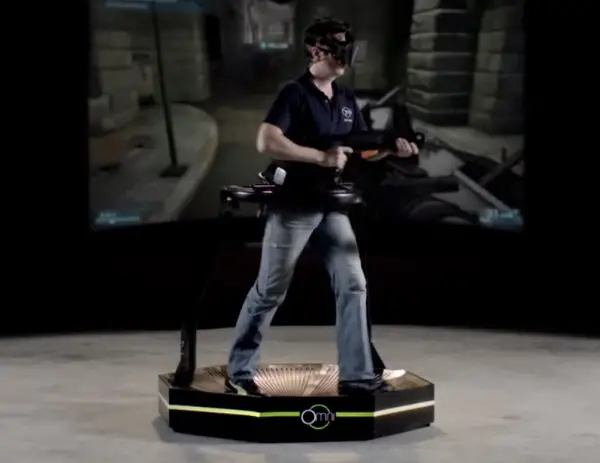
Over the past few years, virtual reality applications have become quite popular.
They are being used across several industries, including healthcare, education, architecture, defense, marketing, and more. But undoubtedly, the best-known application of virtual reality is in the video game industry.
More and more game developers are coming up with virtual reality games that deliver an extremely realistic gameplay experience that traditional video games cannot match. And since this new technology is still developing, the demand for such games will only increase in the future.
This provides a fantastic opportunity for people interested in such technologies and wanting to enter the video game industry. With tools and technologies available nowadays, you, too, can become a VR game developer.
So, if you want to learn how to make your own VR game, check it out now!
Virtual Reality – What Is It?
Before you can get down to developing a virtual reality game, it is important to understand what exactly the term ‘virtual reality’ means. In its simplest form, virtual reality is the simulation of three-dimensional spaces which can be experienced through specially developed equipment.
This equipment usually includes VR headsets that create the visuals the player sees, such as the simulated environment and objects in it. To deliver an immersive experience, VR headsets have head tracking technology, which allows moving the head to manipulate the camera. When the player turns their head, the VR headset alters the visuals by tracking the movement.
Advanced virtual reality headsets often have motion-tracked controllers that function as your hands in the virtual environment. These can be used to perform various actions, like picking up and throwing game objects. Several types of VR headsets are available from different manufacturers, and VR applications and games are available on almost all platforms. These include PCs, game consoles, and even smartphones.
As technology continues evolving, VR headsets are becoming more affordable, and the number of VR applications is increasing rapidly.
Virtual Reality Experiences

VR games are different from augmented reality games since the latter uses a real-world environment. There are primarily two types of VR experiences you should know about – stationary experiences and room-scale experiences.
1. Stationary VR
Stationary VR experiences are basic VR experiences where the users can look around the virtual environment, but no movement is possible. Such experiences are usually provided by cheaper headsets that have a tiny controller, and these headsets can only perform basic functions. The most common stationary VR experiences include certain FPS games and theme park ride simulations.
Since stationary VR experiences are the first type of VR to come into common use, they are highly reliable and accessible. Such experiences are also available on mobile devices, and popular headsets developed for them include Samsung Gear VR, Oculus Go, and Google Cardboard.
2. Room-Scale VR
The more immersive form of virtual reality, room-scale VR, utilizes complete head tracking, which makes it possible to move around in the virtual world. This is possible because the VR headsets used in this case usually come with motion-tracking controllers that also track hand movement.
Popular room-scale VR headsets include Valve Index, HTC Vive, PlayStation VR, and Oculus Quest. Also, these headsets can be used for stationary VR experiences, but stationary ones cannot be used for room-scale experiences.
Virtual Reality Movement

Since movement plays a major role in VR experiences, it is the most important element and can be handled in different ways.
1. Teleportation
In VR apps allowing teleportation, the player moves instantly from one spot to another, with the other spot generally visible at a distance. The user generally selects the point where they wish to teleport using an input device. Depending upon the game, you may be able to teleport to various points or only predetermined ones.
In this type of movement, fade-in and fade-out effects are used.
2. Smooth Movement
This is similar to the movement in traditional video games, where the character moves from one point to another. An input device like a joystick is generally used for this purpose, but newer technologies, like omnidirectional treadmills, may replace them in the future. However, the chances of virtual reality sickness are high in this type of movement.
Selecting The Game Engine
Like traditional video games, VR games require game engines which are the software that allows VR game development. A virtual reality game engine includes various tools that simplify the process of VR development.
This means that by using such game engines, the developer can focus on the gameplay aspects, such as the physics of the environment, game graphics, etc., without worrying about coding. There are many game engines that can be used for VR game development, but the two most commonly used include the following:
1. Unreal Engine
Unreal engine is an extremely powerful engine used for developing 3D games due to its exceptional graphics capabilities. Because of this, a VR game developed using this game engine can have photorealistic graphics. The Unreal game engine is used in many AAA gaming titles and in the development of indie games due to its affordable pricing.
This engine utilizes the C++ language, has an excellent scripting system, and has integrated multiplayer support.
2. Unity
Another one of the most popularly used game engines, Unity, is best known for its cross-platform capabilities. This means that it can be used to develop a wide variety of games, such as 2D games, 3D games, AR and VR applications, console games, and even mobile games. It is also used in architecture, making short films, and other applications.
Unity is a good choice for developing VR games because it is widely supported and compatible with many VR headsets. It utilizes the C# programming language and has a universal framework that makes VR development easy.
Making A VR Game

Both Unity and Unreal are excellent game engines for developing VR games, and which one you select will depend on the type of game that is to be developed. Once you’ve selected the engine, it is time to look at the game development process.
Developing For The Headset
The first thing you should do when developing a VR game or VR app is to decide which headset it is being developed for since different headsets can offer varying experiences. To make things easy, we recommend developing for a headset you own since that will make it easy for you to test the game.
Practices To Prevent Motion Sickness
The biggest downside of VR games is that many people can experience motion sickness when playing them. It happens when your brain is unable to process motions using physical senses, and it can cause nausea, headaches, and dizziness. Some people may not experience severe symptoms, but many others are highly sensitive.
If your VR game can cause motion sickness, not many people will be willing to play it. While there is no standard solution to this problem, there are a few measures you can take to reduce this.
1. Let The Player Control The Movement
Ideally, the player should be allowed to control how their character moves, reducing the chances of the brain getting confused and causing motion sickness.
2. Use Stationary Experiences When Player Movement Is Not Required
If your VR game does not require the player to move, stationary experiences might be a better option than a room-scale one. Also, you can block peripheral vision for the same purpose.
3. Ensure High Frame Rates
A VR game that runs at frame rates of 60fps or higher has a lesser chance of causing motion sickness. In contrast, games that run at lower frame rates are not very smooth and can cause the player to experience motion sickness symptoms.
4. Use Fade In And Fade Out Effects
Use fade-in and fade-out effects when the game has to transition to a different setting or area. This allows the player to get enough time to process the change and reduces the chances of them experiencing motion sickness.
5. Avoid Effects Like Motion Blur
Effects like motion blur, which are used in many video games, can cause motion sickness, even in a non-VR game. You can include such effects but leave it up to the player to turn it on or off.
Final Thoughts
With the evolution of technology, virtual reality, once termed a gimmick, is now a reality. And with VR games, this technology is becoming a part of everyday life for many people. Now it is possible to have virtual reality experiences not just from your PC but through consoles and mobile devices.
For those interested in VR game development, the increasing popularity of such games will allow them to try out new things and find out what is possible. With the steps mentioned in this guide, you can start developing a virtual reality game easily.
And many of the skills you will gain during the development process will also come in handy in other areas. On that note, it is time to conclude this guide. All the best for your VR game development journey!
